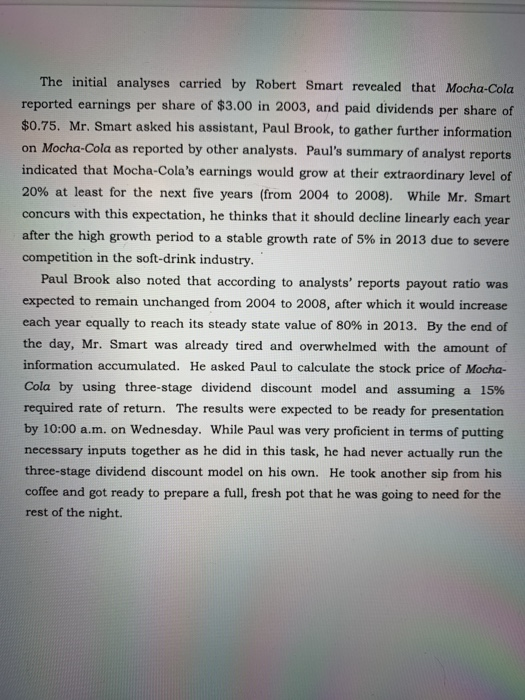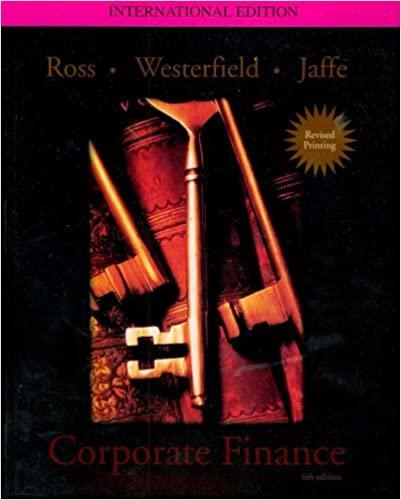please show calculations in Excel

Valuing a Stock with Three-Stage Dividend Discount Model Mocha-Cola In the morning of Tuesday, January 3rd 2004, Robert Smart, a security analyst at Armani Investment was reviewing the 2003 financial statements of Mocha-Cola as requested by one of their most important clients, Mr. Jin Qian. Mr. Jin Qian has accumulated a significant amount of wealth through Armani's recommendations in the past and now he was interested in investing a sizeable amount of his wealth into Mocha-Cola stocks. Mocha-Cola, the world famous soft drink company, was able to increase its market value consistently over the last several decades. While Mocha-Cola's growth in the domestic soft drink market has leveled off in the past few years due to aggressive marketing campaigns of its competitors (especially by Tipsy- Cola), the analysts expect that the firm will continue to expand thanks to the introduction of new products and increased demand for Mocha-Cola products by international markets. The initial analyses carried by Robert Smart revealed that Mocha-Cola reported earnings per share of $3.00 in 2003, and paid dividends per share of $0.75. Mr. Smart asked his assistant, Paul Brook, to gather further information on Mocha-Cola as reported by other analysts. Paul's summary of analyst reports indicated that Mocha-Cola's earnings would grow at their extraordinary level of 20% at least for the next five years (from 2004 to 2008). While Mr. Smart concurs with this expectation, he thinks that it should decline linearly each year after the high growth period to a stable growth rate of 5% in 2013 due to severe competition in the soft-drink industry. Paul Brook also noted that according to analysts' reports payout ratio was expected to remain unchanged from 2004 to 2008, after which it would increase each year equally to reach its steady state value of 80% in 2013. By the end of the day, Mr. Smart was already tired and overwhelmed with the amount of information accumulated. He asked Paul to calculate the stock price of Mocha- Cola by using three-stage dividend discount model and assuming a 15% required rate of return. The results were expected to be ready for presentation by 10:00 a.m. on Wednesday. While Paul was very proficient in terms of putting necessary inputs together as he did in this task, he had never actually run the three-stage dividend discount model on his own. He took another sip from his coffee and got ready to prepare a full, fresh pot that he was going to need for the rest of the night









